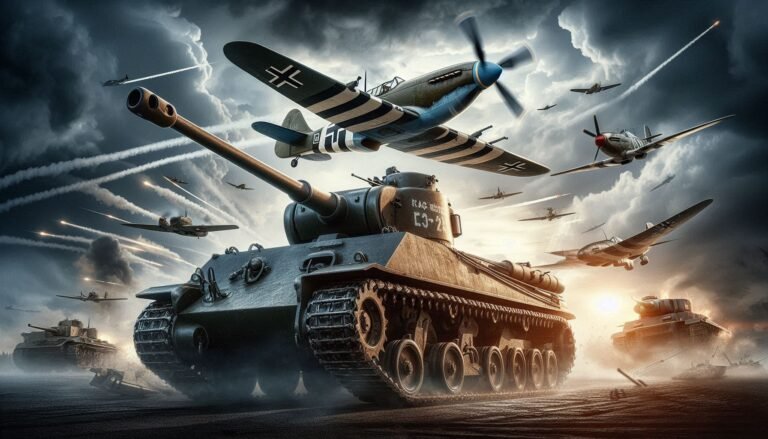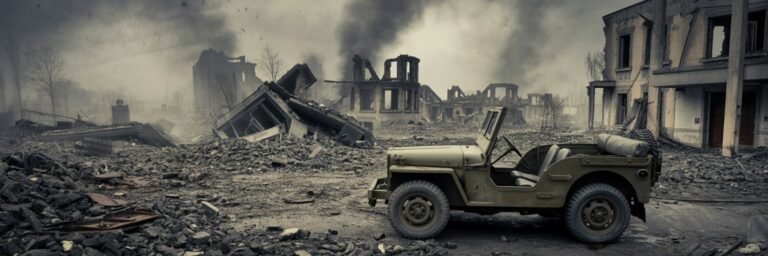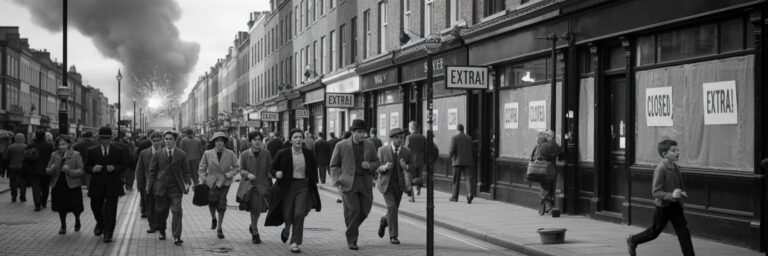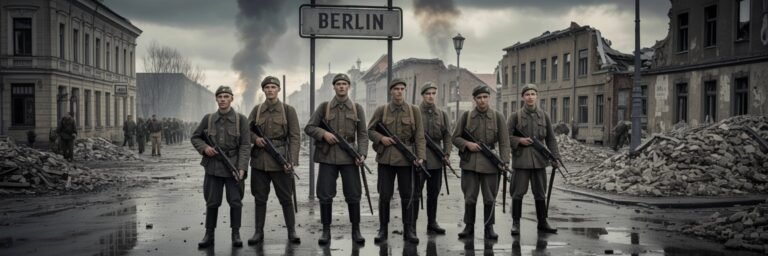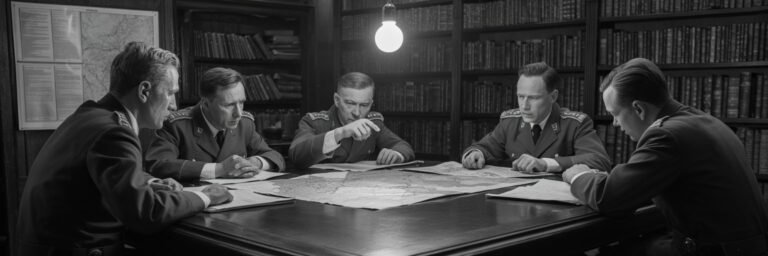It was an era of widespread destruction, unparalleled material shortages, and existential anxieties. The world was embroiled in what would be one of its most catastrophic international conflicts, World War II. Yet, during this tumultous period, everyday life continued. This historical feature will strip away the typical military frameworks and delve into the social and cultural underpinnings of everyday existence during the years 1939-1945. If you look beneath the tide of tanks and airplanes, you’ll uncover human tales steeped in resilience, ingenuity, adaptability, and the insurmountable will to survive.
HISTORICAL BACKGROUND
The daily life during World War II was a battlefield of its own. Citizens experienced the war through the prism of their ordinary routines, responsibilities, and relationships that were reshaped by the conflict. A prominent academic, Oral Historian Alessandro Portelli, converged life stories of Italian civilians during this period and emphasized, ‘The private is political’. Thus, the personal narrations of ordinary life during the war constitute valid historical evidence.
In the early years of the war, there was a certain domestic energy and positivity. The British government took steps to maintain public morale. One successful strategy was the mass evacuation of children from cities to countryside, approximately 3 million chidren were moved between 1939-1940 in a national effort to protect the future generation. In the United States, men and women contributed in defense production jobs, and war bonds were sold to finance the war. Simultaneously, the hardships of food rationing and the threat of air raids were becoming a part of life.
THEORIES AND INTERPRETATIONS
While mainstream historical accounts tend to focus on political and military developments, social historians like Lizzie Collingham and Richard Overy offer an alternative lens. They explore how the experience of World War II varied among different social and demographic groups.
In “The Taste of War,” Collingham contends that food, or the lack thereof, played a key role in the outcome and experience of the war. According to her, food had profound implications not just for soldiers’ morale but also for strategies, alliances, and occupations.
Overy’s interpretation of history, as illustrated in his book “The Morbid Age: Britain and the Crisis of Civilization, 1919–1939,” offers a view of everyday life as a narrative of fear and foreboding. Overy suggests that the dilemmas of everyday life were overcast by a deeply unsettling cultural mood, exacerbated by air raids, blackouts, and radio broadcasts.
MYSTERIES AND CONTROVERSIES
Despite numerous historical accounts, certain less-discussed aspects of daily life during World War II bemuse researchers and historians. For instance, varied experiences of women and gender dynamics during this period have often polarized academics.
It is well documented that women across the Allied and Axis nations mobilized for war efforts through industrial jobs and auxiliary services, but the extent and significance of their contributions are vigorously debated. The symbol of Rosie the Riveter in the United States represented the proliferation of women in industry. Conversely, in Japan, women’s participation in labor was seen as a last-four desperate measure.
An intriguing discourse is the controversy around collaboration and resistance, particularly in occupied territories. The line between survival and ethical choices blurred in the face of adversity, fueling debates on the moral complexity of life during the war.
SYMBOLISM AND CULTURAL SIGNIFICANCE
Keen observations of cultural symbols and practices offer a unique understanding of wartime society. Despite grim realities, people sought solace in art, music, and fashion. Vera Lynn’s music provided emotional succor to the British citizens, and the ‘Swing Kids’ of Germany defied Nazi ideology through their love for jazz.
Fashion evolved due to strict rationing; the ‘Utility Clothing Scheme’ in Britain led to a minimalistic yet chic fashion direction. The Zoot Suit became a symbol of rebellion amongst minority youth in America.
MODERN INVESTIGATIONS
Recent historiography has revealed nuances of everyday life beyond the mainstream narratives. Gender, race, and class have emerged as crucial categories of historical investigation.
Scholars like Eileen Boris and Alice Kessler-Harris provide a reevaluation of the gendered division of labor, questioning the notion of women workers as temporary ‘replacements.’ Exploring issues of discrimination, Harvard University historian Caroline Elkins exposes the internment of African soldiers by the British Army.
These diverse perspectives offer fresh insights into the influences that have shaped our current world, contributing to the richness of the historical inquiry.
LEGACY AND CONCLUSION
World War II’s legacy extends beyond the military and political scale. It revolutionized everyday life, leading to unforeseen social changes and cultural shifts. It democratized society, increasing government intervention in economic affairs and transforming gender dynamics.
Throughout this unvarnished narrative of World War II, we witness human resilience, innovation in the face of adversity, and strength in unity. It is through these stories of individuals, their struggles, and their hopes, that we can truly appreciate the multitudinous layers of this historical era.
In conclusion, the exploration of everyday life during World War II unearths subplots of survival, resilience, and adaptability. By examining the war through the lens of the everyday, we gain a deeper understanding of the impact of this global conflict on ordinary people, a crucial part of the war’s legacy that continues to resonate today. It is their stories, as much as those of the worldwide leaders and military strategists, that paint a comprehensive picture of life during World War II. A tapestry of microcosms that, when stitched together, tell us a human tale of courage, resilience, and survival during the most harrowing of times.

